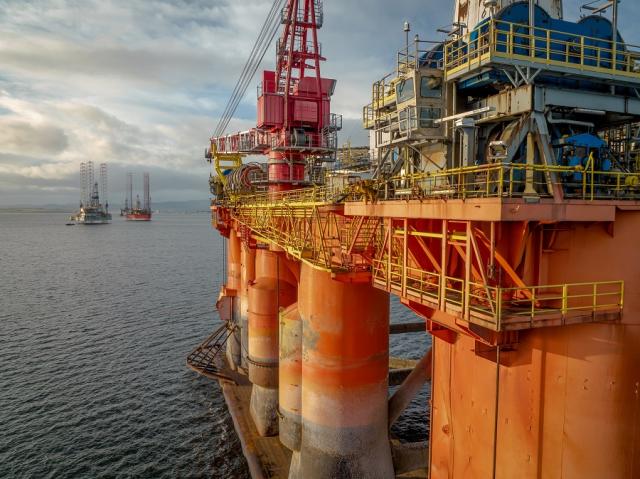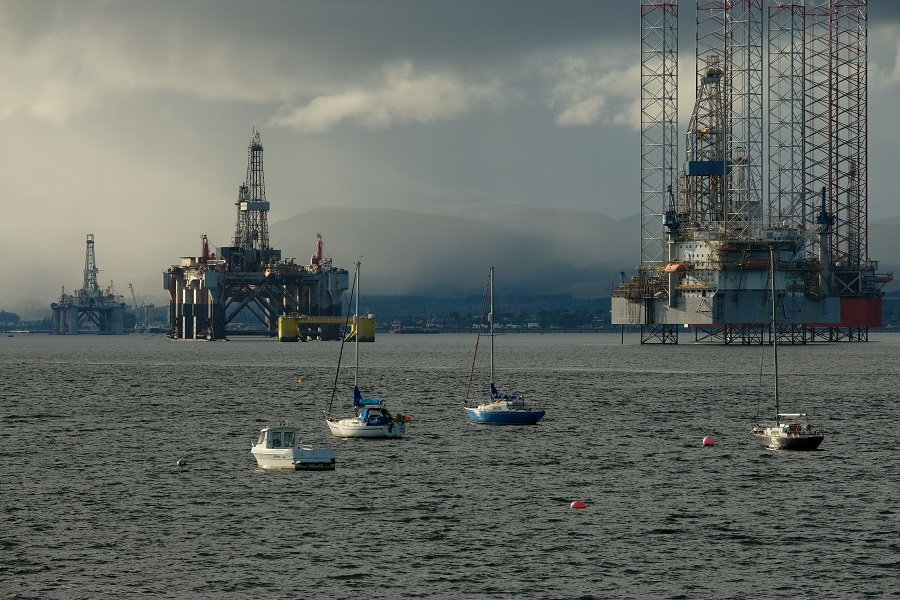
Xodus uses a comparative assessment (CA) process in order to plan decommissioning activities for its clients, taking into account both technical and regulatory requirements. (Source: CloudVisual/ Shutterstock)
Offshore decommissioning is becoming increasingly important, especially in maturing oil and gas production regions such as the North Sea. Industry group Offshore Energies UK anticipates decommissioning activity in the country’s waters will rise over the next 3 years to 4 years, with spending averaging £1.83 billion ($2.2 billion) per year over 2022-25, up from £1.23 billion ($1.48 billion) per year over 2019-2021.
Against this backdrop, the need to better prepare for decommissioning is increasingly apparent, and this is what energy consultancy Xodus is emphasizing. Xodus said it has supported over 60% of all recently approved decommissioning plans on the U.K. Continental Shelf (UKCS) and has completed more than 270 decommissioning scopes to date.
The company uses a comparative assessment (CA) process to plan decommissioning activities for its clients, taking into account both technical and regulatory requirements.
“The approach is based upon the requirement to build a robust evidence base to support comparative assessment outcomes,” Nic Duncan, subsea decommissioning and integrated projects lead at Xodus, told Hart Energy.
Xodus' system follows seven steps recommended within U.K. guidance, Duncan said, starting with scoping – where the inventory is established using standardized inventory templates.
“The template provides a means to clearly organize infrastructure for the CA process, but also breaks down the component materials to inform the recycling emissions inclusion within the environmental appraisal,” Duncan said. “Once the infrastructure is suitably organized, a standardized set of options is applied in screening, and those that are unsuitable are screened out.
“Methodologies are built up for the remaining options in standardized sheets, which automatically generates the bulk of the criteria data required for the final CA evaluation.”
The evaluation is conducted by experienced facilitators using a proprietary tool based on multi-criteria decision analysis (MCDA).
Duncan said the tool itself is a sub-variant of a more generalized tool used for decision-making and owned by Xodus’ technical safety and risk (TSR) division.
“Such processes are commonly applied across development phases to ensure auditable decision making as part of good project management practices,” he said.
Unprecedented scale
Since 2019, Xodus has applied this approach to a decommissioning project in the North Sea for an international energy company. The project entails the decommissioning of complex structures, including large steel piled jackets, multiple subsea tiebacks, large subsea structures and over 800 km (497 miles) of pipelines and umbilicals in about 150 m of water.

“The scale of this decommissioning project has been beyond any other of this type we have delivered in the UKCS,” Rama Sharma, Xodus’ decommissioning facilities and optimization lead at Xodus, told Hart Energy.
Duncan said execution will not begin until the second half of the decade and will take several years to complete overall.
“The approval process has commenced for the first assets to be decommissioned, but, as this is a sizeable portfolio, the preparation phase for later assets overlaps this,” he said. “A continuous process will be followed with learnings cycled back into the later submissions.”
To help steer a path through the project’s regulatory requirements, Xodus facilitated a road-mapping workshop, helping to identify potential hurdles and key milestones. A strategy was then developed into defined scopes of work.
“One of the primary purposes of the road-mapping exercise was to establish the priorities for the portfolio,” Sharma said. “Everything cannot be done at once, so sequencing and optimization of activities was important. Challenges identified are likely to be common with many other North Sea operators' portfolios.”
Sharma noted such challenges included managing priorities with a finite project team and regulator capacity. These key challenges are what stimulated the drive towards activity optimization—collating infrastructure together for comparative assessment, establishing a long-term project team to ensure consistency across assets and the adoption of digital tools such as eBase to assist processes, Sharma continued.
Single team approach
Xodus takes a single cross-discipline team approach to decommissioning projects in an effort to ensure standardized delivery.
“This is the approach Xodus takes with all of the decommissioning planning work we engage in,” Duncan said. “That means we capture incremental efficiency improvements and ensure a consistent approach with the regulators, building trust and industry recognition. This allows us to price and schedule work confidently and minimizes change for our clients.”
Sharma added, “With decommissioning being inherently multi-discipline, the standardized internal process provides a path for project leaders and facilitates the use of specialists within the organization to provide input as required without necessarily having to be decommissioning experts themselves.”
A defined, standardized approach gives the project team the ability to be more agile and adaptable to externally changing circumstances regardless of where the work is being delivered, Sharma said.
Sharma also noted that data management has been one of the biggest challenges in the past, and while spreadsheets have previously been essential, Xodus is now moving rapidly into digitalization and anticipates making more use of web-based digital data management.
“Xodus has developed a digital data management system titled FLUX for this purpose and has deployed it across the organization,” Sharma said. “FLUX automates the flow of data through any particular system, speeding up processes and improving quality. It allows for the application of analytics and can be used to create visualizations and interactive deliverables.”
Recommended Reading
CNX, Appalachia Peers Defer Completions as NatGas Prices Languish
2024-04-25 - Henry Hub blues: CNX Resources and other Appalachia producers are slashing production and deferring well completions as natural gas spot prices hover near record lows.
Chevron’s Tengiz Oil Field Operations Start Up in Kazakhstan
2024-04-25 - The final phase of Chevron’s project will produce about 260,000 bbl/d.
Rhino Taps Halliburton for Namibia Well Work
2024-04-24 - Halliburton’s deepwater integrated multi-well construction contract for a block in the Orange Basin starts later this year.
Halliburton’s Low-key M&A Strategy Remains Unchanged
2024-04-23 - Halliburton CEO Jeff Miller says expected organic growth generates more shareholder value than following consolidation trends, such as chief rival SLB’s plans to buy ChampionX.
Deepwater Roundup 2024: Americas
2024-04-23 - The final part of Hart Energy E&P’s Deepwater Roundup focuses on projects coming online in the Americas from 2023 until the end of the decade.





